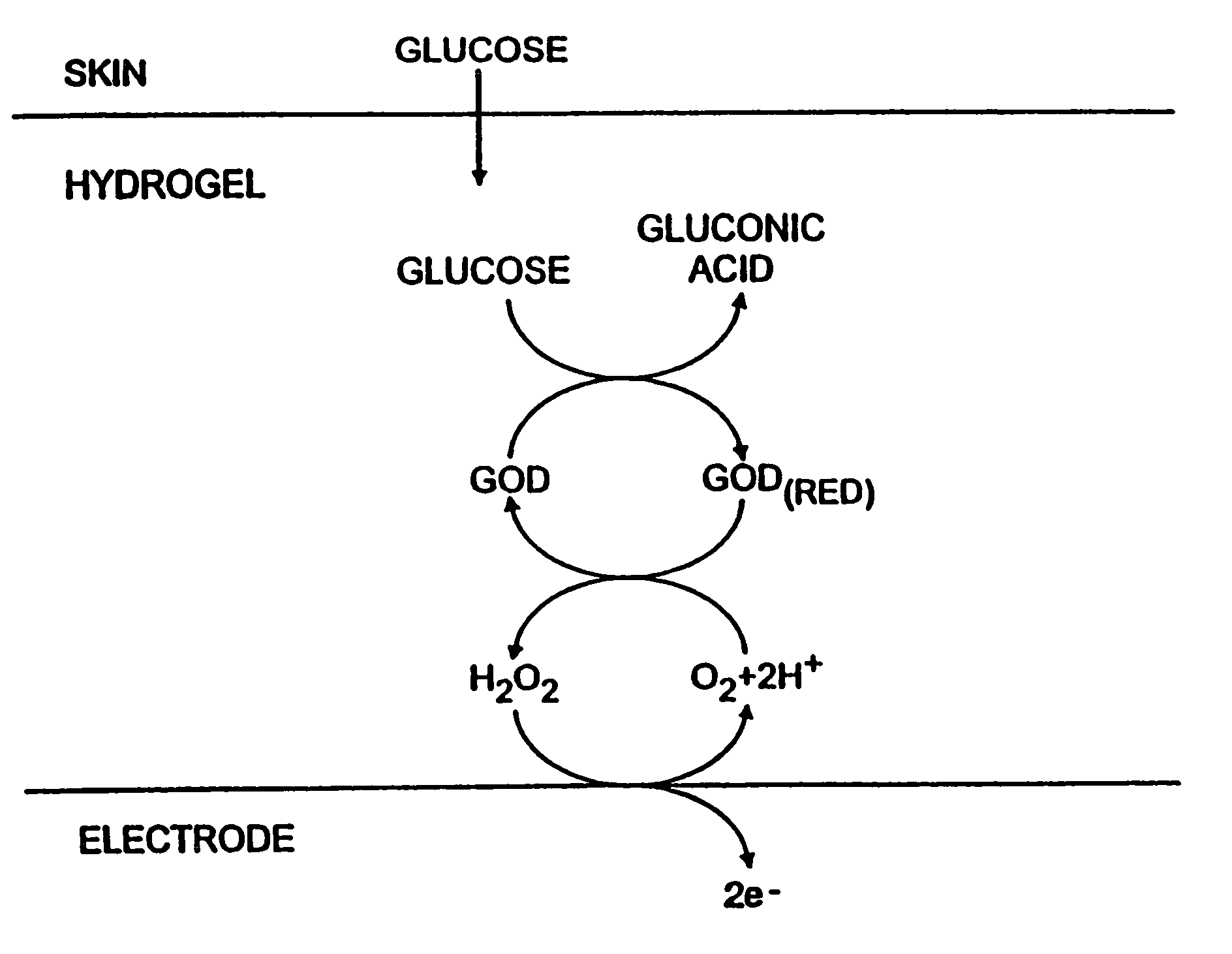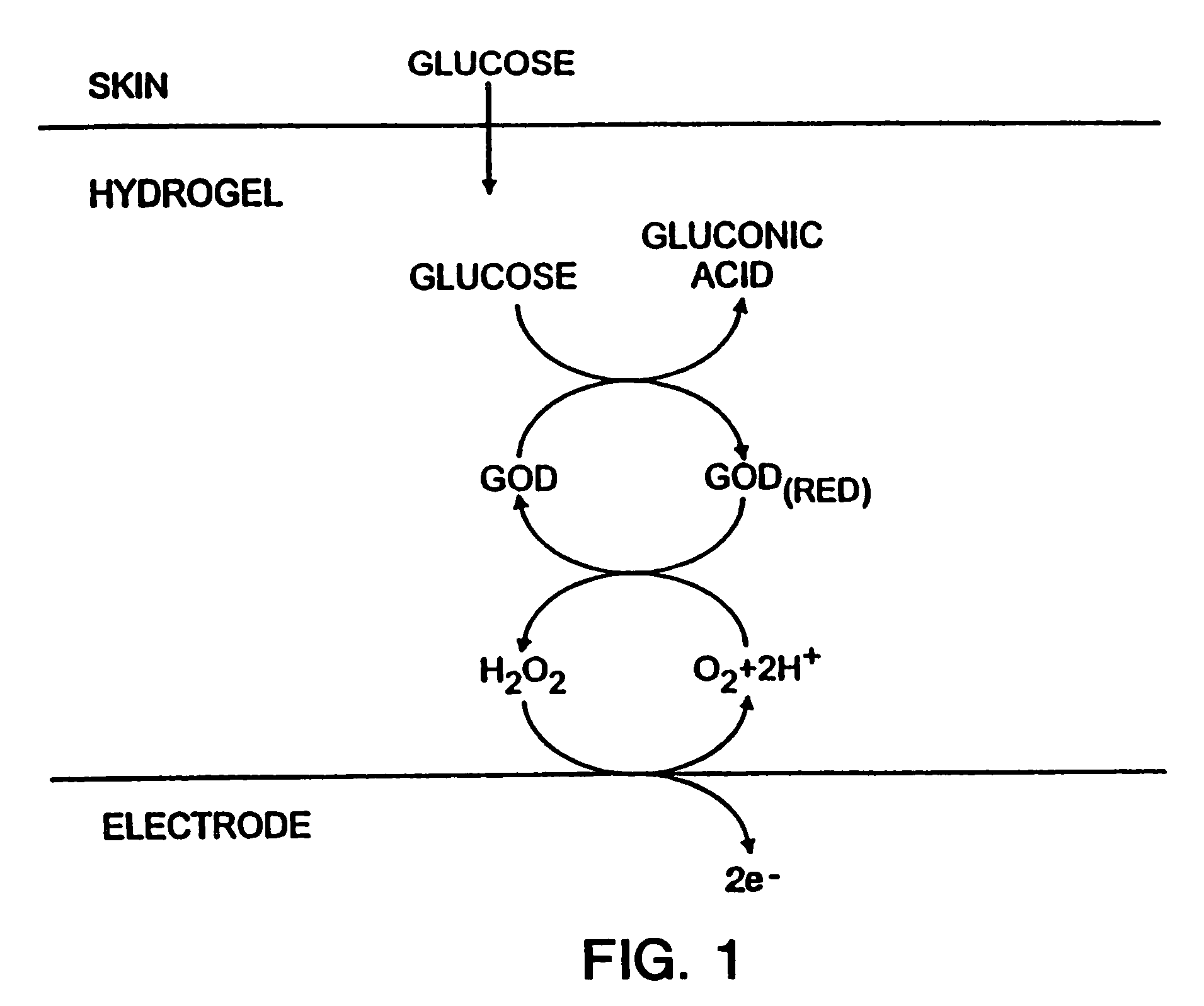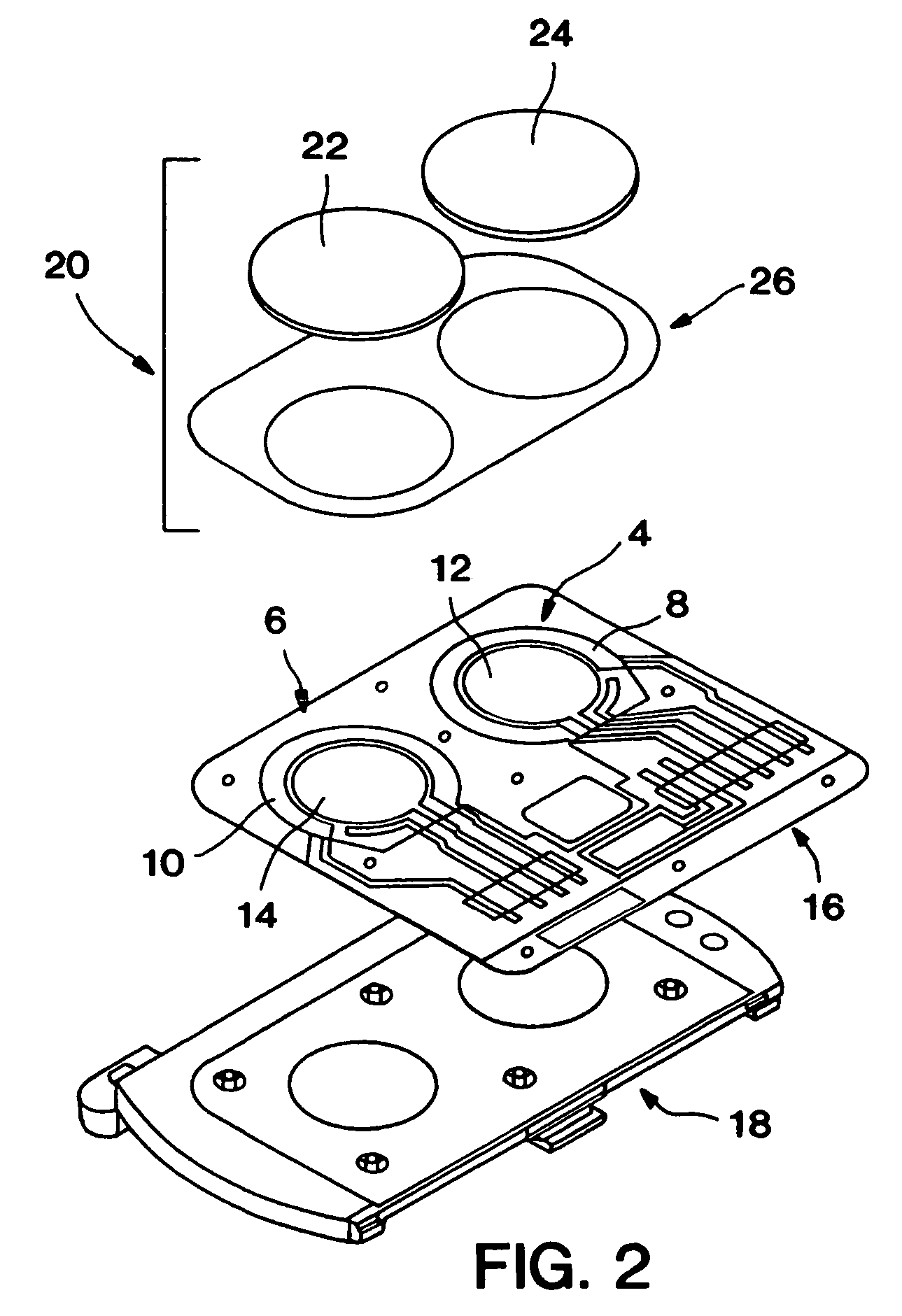Biosensor and methods of use thereof
a biosensor and sensor technology, applied in the field of biosensors, can solve the problems of increasing the likelihood of patient acceptance, insufficient four to seven glucose measurements per day,
- Summary
- Abstract
- Description
- Claims
- Application Information
AI Technical Summary
Benefits of technology
Problems solved by technology
Method used
Image
Examples
example 1
Assessing Background Noise and Sensitivity in a Biosensor
[0111]The following procedure can be used to determine the background current and sensitivity to hydrogen peroxide of a biosensor electrode in a glucose monitoring system.
[0112]Method: The sensitivity and background of the working biosensor electrode is determined by placing the biosensor in a test cell of fixed volume. The cell is filled with a pH 7.5 0.1 M phosphate buffered saline (PBS) solution containing 77 mM NaCl. The buffer solution is quiescent in the cell during measurement. The biosensor is then biased at the usual operating potential of 0.6V, and the steady-state background current measured. A 2 μM solution of hydrogen peroxide is then prepared in the same PBS buffer solution, and is added to the test cell. The biosensor is again biased, and the-current measured at fixed time points. The measurement is repeated for 5 μM and 10 μM hydrogen peroxide solutions.
[0113]A calibration curve can be constructed from the curr...
example 2
Assessing Passive Hydrogen Peroxide Depletion in a Biosensor
[0117]The following procedure can be used to determine the rate of passive (non-electrochemical) hydrogen peroxide depletion caused by a biosensor electrode constructed in accordance with the present invention.
[0118]Method: The following procedure is optimized to test biosensor electrodes having an approximate geometric area of 1 cm2, and a total biosensor area of about 3 cm2; however, these methods are readily scalable to smaller or larger electrode dimensions by the ordinarily skilled artisan.
[0119]The biosensor to be tested is placed in a test cell which contains a volume of test solution of approximately 360 μL in contact with the electrode. The thickness of the solution layer in contact with the biosensor electrode is approximately 50 mil (0.127 cm). The body of the test cell is preferably made from materials that do not cause a substantial amount of hydrogen peroxide degradation, for example polytetrafluoroethylene (e...
example 3
Testing Protocol for Ag / AgCl Screen-Printed Electrodes
[0121]The following procedure can be used determine the amount of Ag and AgCl in a screen printed Ag / AgCl electrode that is electrochemically accessible at a given current density.
[0122]Method: The amount of available Ag and AgCl is determined by passing a constant current between the Ag / AgCl electrode and a counter electrode immersed in a suitable electrolyte until an increase in the applied voltage indicates that depletion of Ag or AgCl has occurred.
[0123]Test of available Ag: The Ag / AgCl electrode and a much larger counter electrode of chloridized silver foil are placed opposite each other in a beaker. The beaker is filled with 0.1 M PBS buffer (pH 7.5) containing 77 mM NaCl. The electrodes are connected to a suitable constant current power source and the electrodes biased so that the Ag / AgCl electrode is positive with respect to the counter electrode. A constant current passes between the electrodes. The applied potential is ...
PUM
| Property | Measurement | Unit |
|---|---|---|
| geometric surface area | aaaaa | aaaaa |
| surface area | aaaaa | aaaaa |
| surface area | aaaaa | aaaaa |
Abstract
Description
Claims
Application Information
 Login to View More
Login to View More - R&D
- Intellectual Property
- Life Sciences
- Materials
- Tech Scout
- Unparalleled Data Quality
- Higher Quality Content
- 60% Fewer Hallucinations
Browse by: Latest US Patents, China's latest patents, Technical Efficacy Thesaurus, Application Domain, Technology Topic, Popular Technical Reports.
© 2025 PatSnap. All rights reserved.Legal|Privacy policy|Modern Slavery Act Transparency Statement|Sitemap|About US| Contact US: help@patsnap.com



